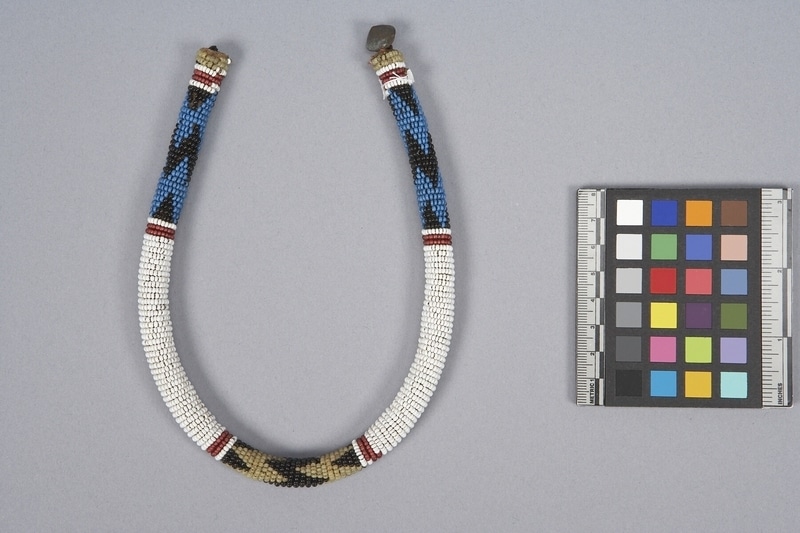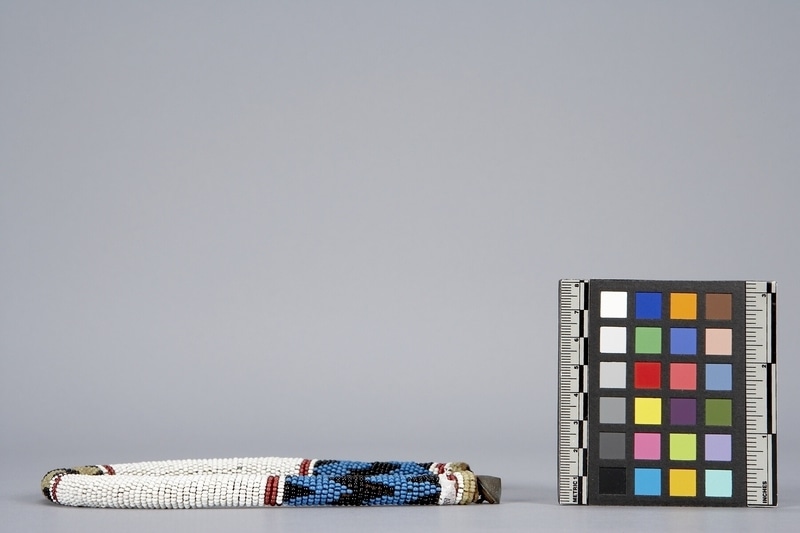Neck Ring Item Number: Ab315 a from the MOA: University of British Columbia


Description
U-shaped neck ring made of rows of beads sewn onto a compressed coil of fabric. The main pattern is made of five wide stripes; three are coloured patterns, with two wide white stripes between them. The central section is yellow and black zigzags, the end sections are blue and black zigzags; there are six red stripes in the white areas and yellow stripes at the ends. Metal closure button at one end.
History Of Use
Nguni style head or neck piece (umgingqo, plural imigingqo), worn by men and women. In the early 20th century beaded items were primarily used for courting Zulu adults, and to display wealth and social standing. Though a unisex accessory, imigingqo are only made by women who can give them as a gift to a male suitor, as a means to regulate the relationships between man and woman. Alternatively, a woman can opt to wear the umgingqo herself, often accessorizing it with other beaded items. Typically more numerous and elaborate beaded items are worn at special or ceremonial occasions, where the wealthiest members of society make their standing known. Today imigingqo can still be found around peoples’ necks or for sale in bead artisan’s shops, though they are less prominent in day-to-day life.
Iconographic Meaning
Each colour in Zulu beadwork is associated with a traditional proverb, allowing for a translation of meaning; the specifics of the message are known only to the maker. In this umbingqo, the colours white (obumhlope), black (obumnyama), red (umgazi), yellow (incombo), and blue (inkankane) are used.
Specific Techniques
Imigingqo are made using a beadworking technique called gongqoloza, which involves wrapping a string of already-strung beads around a core; made from either cloth or glass.
Item History
- Made in South Africa during 1900
- Owned by B.C. Provincial Museum before November 17, 1977
- Received from B.C. Provincial Museum (Transferring institution) on November 17, 1977
What
Who
- Culture
- Zulu
- Previous Owner
- B.C. Provincial Museum
- Received from
- B.C. Provincial Museum (Transferring institution)
Where
- Holding Institution
- MOA: University of British Columbia
- Made in
- South Africa
When
- Creation Date
- during 1900
- Ownership Date
- before November 17, 1977
- Acquisition Date
- on November 17, 1977
Other
- Item Classes
- beadwork
- Condition
- good
- Current Location
- Case 102
- Accession Number
- 0424/0015 a